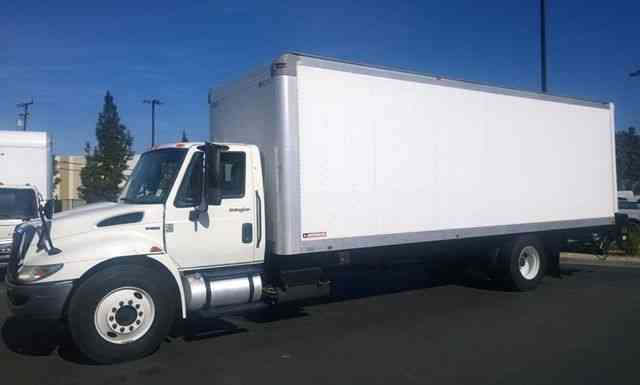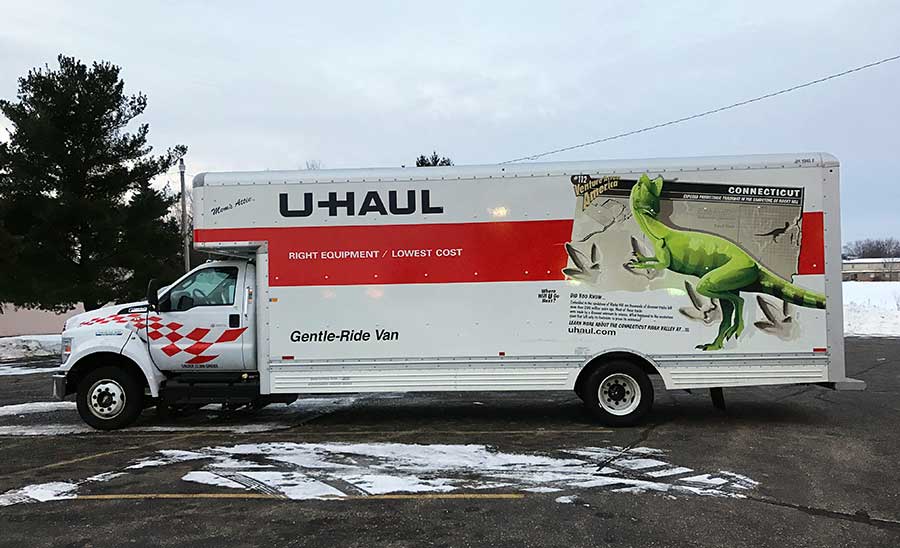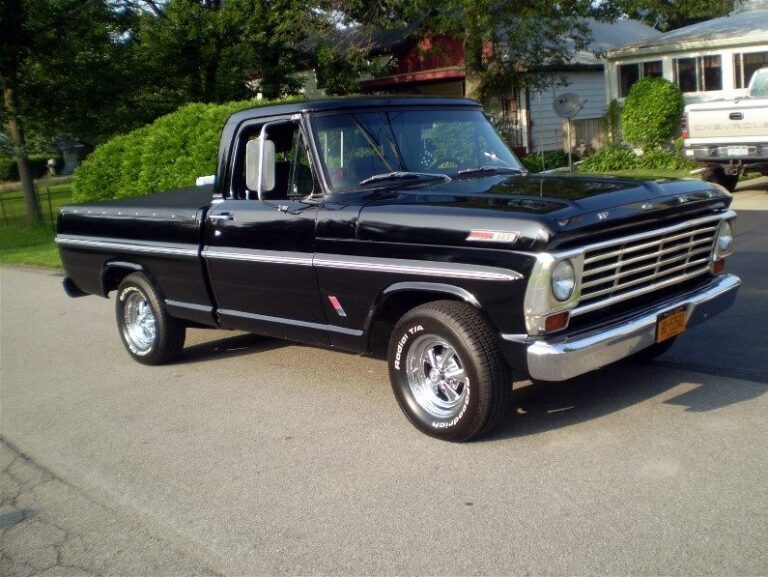What Is A 26ft Truck: Your Comprehensive Guide to Large-Scale Transport
What Is A 26ft Truck: Your Comprehensive Guide to Large-Scale Transport cars.truckstrend.com
When the need arises to move a substantial volume of goods, whether it’s the contents of a large family home, commercial inventory, or heavy equipment, a standard pickup truck or van simply won’t suffice. This is where the venerable 26ft truck enters the scene. Often considered the largest non-CDL (Commercial Driver’s License) truck available for rent to the general public, what is a 26ft truck and why is it such a popular choice for significant hauling tasks?
A 26ft truck, typically a straight truck or box truck, is a robust commercial vehicle designed for high-capacity transportation. Its name directly refers to the approximate length of its cargo box, which provides an impressive volume for diverse hauling needs. These trucks bridge the gap between smaller moving vans and full-sized semi-trailers, offering a versatile and often more accessible solution for both personal and commercial ventures. Understanding what is a 26ft truck and its capabilities is crucial for anyone planning a large move or substantial delivery.
What Is A 26ft Truck: Your Comprehensive Guide to Large-Scale Transport
What Exactly Is a 26ft Truck?
At its core, what is a 26ft truck? It’s a single-unit vehicle where the cab and the cargo area are mounted on the same chassis. The "26ft" refers to the exterior length of the cargo box from front to back. While external dimensions can vary slightly by manufacturer, the internal cargo dimensions are roughly:
- Length: 26 feet (approx. 312 inches)
- Width: 8 feet (approx. 96 inches)
- Height: 8.5 feet (approx. 102 inches)
This translates to an internal volume of approximately 1,700 cubic feet or more, making it suitable for moving the contents of a 3-5 bedroom home or a significant amount of commercial goods.

Beyond its dimensions, what is a 26ft truck in terms of its operational capacity?
- Gross Vehicle Weight Rating (GVWR): Most 26ft trucks have a GVWR ranging from 25,500 to 26,000 pounds. This is a critical figure because it dictates whether a Commercial Driver’s License (CDL) is required. In the United States, a CDL is generally required for vehicles with a GVWR of 26,001 pounds or more, making the 26ft truck just under that threshold for most models.
- Payload Capacity: The maximum weight the truck can carry, including its contents and passengers, typically ranges from 10,000 to 15,000 pounds. It’s vital to check the specific truck’s rating to avoid overloading.
- Fuel Efficiency: Given their size and weight, 26ft trucks are not known for their fuel economy. They generally average between 6-10 miles per gallon (MPG), varying based on load, terrain, and driving style. They often run on diesel, which can offer better torque and longevity, though gasoline models are also common, particularly in rental fleets.
- Features: Most 26ft trucks come equipped with essential features like automatic transmission, power steering, air conditioning, and a two-person bench seat. Crucially, many rental models include a loading ramp or a hydraulic liftgate, which significantly eases the process of loading and unloading heavy items. E-track systems and tie-down rails inside the cargo area are standard for securing your cargo.

Why Choose a 26ft Truck? Common Applications and Benefits
Understanding what is a 26ft truck helps clarify its widespread utility. Its robust capacity and non-CDL accessibility make it a go-to option for various scenarios:
- Residential Moving: This is arguably the most common use. A 26ft truck can typically accommodate the entire contents of a large apartment or a 3-5 bedroom house, including major appliances, furniture, and numerous boxes. It often eliminates the need for multiple trips, saving time and fuel.
- Commercial Deliveries: Businesses frequently utilize 26ft trucks for local or regional deliveries of furniture, appliances, building materials, landscaping supplies, or retail inventory. Their large volume allows for efficient transport of multiple orders in a single run.
- Logistics and Freight: For smaller businesses or individuals needing to transport less-than-truckload (LTL) freight, a 26ft truck offers a flexible and cost-effective alternative to larger semi-trucks.
- Event Transport: Bands, production companies, and event organizers use these trucks to move equipment, staging, and promotional materials.
- Specialized Hauling: From art installations to trade show exhibits, the enclosed and spacious nature of a 26ft truck provides secure transport for valuable or sensitive items.

The key benefits of choosing a 26ft truck include:
- High Capacity: Maximizes what you can move in one trip.
- Versatility: Suitable for personal and commercial use.
- Accessibility: Most models can be driven with a standard driver’s license.
- Cost-Effectiveness: Often more affordable than hiring professional movers for large jobs or contracting a full semi-trailer.
- Control: You control the loading, unloading, and timing of your move or delivery.
Key Considerations Before Renting or Buying a 26ft Truck
Before you decide to rent or purchase a 26ft truck, there are several vital factors to consider:
- Driving Requirements: While most 26ft rental trucks are designed to be driven with a standard Class D driver’s license, always confirm the GVWR and specific state regulations. Some states might have additional requirements based on the truck’s weight or intended use (e.g., interstate commerce).
- Maneuverability: A 26ft truck is significantly longer and wider than a typical passenger vehicle. It has a much larger turning radius, requires more space for lane changes, and has substantial blind spots. Urban driving, tight turns, and parking can be challenging. Plan your routes to avoid narrow streets, low bridges, or areas with restricted access.
- Fuel Costs: Be prepared for significant fuel expenses, especially on long hauls. Diesel fuel can be more expensive per gallon but might offer better mileage. Factor this into your budget.
- Insurance:
- For Rentals: Your personal auto insurance may not cover rental trucks, or the coverage might be limited. Rental companies offer supplemental insurance plans (e.g., damage waiver, liability insurance) which are highly recommended.
- For Ownership: Commercial auto insurance is a necessity, covering liability, collision, comprehensive, and potentially cargo insurance.
- Loading and Unloading: While liftgates or ramps assist, loading a 26ft truck is physically demanding. Plan for adequate help, and consider renting moving equipment like dollies, hand trucks, and furniture pads. Proper weight distribution is crucial for safe driving.
- Maintenance (for owners): Regular maintenance is paramount for commercial vehicles. This includes routine oil changes, tire inspections, brake checks, and fluid level monitoring to ensure reliability and safety.
Types and Features of 26ft Trucks
When asking what is a 26ft truck, it’s important to recognize that while "box truck" is the most common term, there are variations and key features to look for:
- Box Trucks/Straight Trucks: These terms are often used interchangeably for the most common type of 26ft truck. They feature an enclosed cargo area directly behind the cab.
- Refrigerated Trucks (Reefers): While less common in standard rental fleets for general moving, 26ft refrigerated trucks are available for businesses needing to transport temperature-sensitive goods like food, pharmaceuticals, or floral arrangements.
- Features to look for:
- Liftgate vs. Ramp: A hydraulic liftgate can raise and lower hundreds or even thousands of pounds with the push of a button, ideal for heavy appliances, pianos, or palletized goods. A pull-out ramp is simpler and more common for general moving, suitable for dollies and lighter items.
- E-track Systems: These horizontal rails inside the cargo box allow for flexible placement of tie-down straps and shoring beams, providing superior cargo security.
- Transmissions: Most modern rental 26ft trucks feature automatic transmissions, making them easier to drive for those accustomed to passenger vehicles.
- Cab Comforts: Power steering, air conditioning, and adjustable seats contribute to a more comfortable driving experience, especially on long trips.
Operating a 26ft Truck: Tips for Safe and Efficient Use
Successfully operating a 26ft truck goes beyond simply driving. It requires careful planning and awareness:
- Pre-Trip Inspection: Before starting, check tires (pressure, tread), lights, mirrors, fluid levels (oil, coolant, wiper fluid), and brakes. Ensure the cargo area is empty and clean.
- Loading Strategy:
- Distribute weight evenly from front to back and side to side. Place heavier items at the bottom and against the front wall (closest to the cab).
- Secure everything with tie-downs, ropes, or moving blankets to prevent shifting during transit.
- Leave enough space for the rear door to close properly.
- Driving Techniques:
- Wider Turns: Always swing wide on turns to avoid hitting curbs or other vehicles.
- Increased Braking Distance: A fully loaded 26ft truck requires significantly more distance to stop. Maintain ample following distance.
- Blind Spots: Utilize large side mirrors and adjust them properly. Be extra cautious when changing lanes and consider using a spotter when backing up.
- Anticipate Traffic: Look further ahead than usual to react to traffic changes.
- Low Clearances: Always be aware of the truck’s height. Watch for low bridges, overhangs, drive-thru clearances, and tree branches. Navigation apps designed for trucks can help.
- Parking: Plan your parking spots in advance. Look for large, open areas like truck stops, large parking lots, or designated loading zones. Avoid residential streets or tight spaces.
- Fueling: Know whether your truck uses gasoline or diesel and ensure you use the correct fuel type.
- Rest and Breaks: Long hours of driving a large vehicle can be fatiguing. Take regular breaks to rest and stay alert.
Challenges and Solutions
While a 26ft truck offers immense utility, users may encounter challenges:
- Blind Spots:
- Solution: Adjust side mirrors optimally, use convex mirrors if available, check mirrors frequently, use turn signals well in advance, and if possible, have a spotter when backing up or maneuvering in tight spaces.
- Fuel Consumption:
- Solution: Plan efficient routes, avoid excessive idling, maintain consistent speeds (avoiding rapid acceleration/deceleration), and ensure tires are properly inflated.
- Maneuvering in Tight Spaces:
- Solution: Practice driving in empty parking lots, scout your destination beforehand, and always have a clear understanding of the truck’s dimensions. Don’t be afraid to get out and look.
- Loading/Unloading Injuries:
- Solution: Use proper lifting techniques, utilize dollies, hand trucks, and liftgates. Wear appropriate footwear and ask for help with heavy items.
- Breakdowns:
- Solution: For rentals, ensure you understand the roadside assistance policy. For owned trucks, regular maintenance is key, and consider a commercial roadside assistance plan.
Pricing Information: What Is A 26ft Truck Going to Cost You?
The cost associated with a 26ft truck can vary significantly based on whether you’re renting or buying, and the duration of use.
Rental Costs (Approximate)
Rental prices fluctuate based on location, time of year, demand, and specific rental company policies. Most companies charge a daily rate plus a per-mile fee.
| Cost Category | Details | Estimated Price Range (USD) |
|---|---|---|
| Daily Rental Rate | Base rate for 24 hours. Often includes a small number of free miles (e.g., 20-50 miles). | $50 – $100 per day |
| Weekly Rental Rate | Discounted rate for longer rentals. | $300 – $600 per week |
| Monthly Rental Rate | Significantly discounted rate for extended periods. | $1,000 – $2,500 per month |
| Mileage Fee | Charged for every mile driven beyond the included free miles. This can be a major cost factor on long-distance moves. | $0.50 – $1.00 per mile |
| Fuel Costs | Varies greatly by distance, load, and fuel type (gasoline vs. diesel). Factor in 6-10 MPG. | Variable |
| Insurance/Damage Waiver | Optional but highly recommended. Covers damage to the truck and/or third-party liability. | $15 – $50 per day |
| Environmental Fee | Small, often mandatory, fee charged by some rental companies. | $1 – $5 |
| Additional Equipment | Dollies, hand trucks, furniture pads, straps, etc., rented separately. | $5 – $20 per item per day |
| One-Way Fee | If picking up in one location and dropping off in another, this can be a substantial additional charge, especially for long distances or less popular routes. | $200 – $1,500+ |
Buying Costs (Approximate)
- New 26ft Truck: A brand-new 26ft box truck can range from $60,000 to $100,000+, depending on the manufacturer, engine type, features (e.g., liftgate), and customizations.
- Used 26ft Truck: Prices for used 26ft trucks vary widely based on age, mileage, condition, and maintenance history.
- Older models (10+ years, high mileage): $10,000 – $30,000
- Mid-range models (5-10 years, moderate mileage): $30,000 – $50,000
- Newer models (under 5 years, low mileage): $50,000 – $70,000+
- Don’t forget ongoing costs like insurance, maintenance, and registration when buying.
Conclusion
Understanding what is a 26ft truck reveals it to be a powerhouse of versatility and capacity, perfectly suited for individuals and businesses tackling significant moving or delivery challenges. Its ability to handle large volumes of cargo, coupled with the general accessibility for standard license holders, makes it an indispensable tool. While requiring more attention to driving dynamics, loading strategy, and fuel management than a regular car, the benefits of a 26ft truck in terms of efficiency and cost-effectiveness for large-scale transport are undeniable. By carefully considering its capabilities, preparing for the operational nuances, and budgeting wisely, you can leverage the full potential of a 26ft truck to accomplish your hauling goals with confidence.
Frequently Asked Questions (FAQ) About 26ft Trucks
Q1: Do I need a CDL to drive a 26ft truck?
A1: In most cases, no. Most 26ft rental trucks are designed with a Gross Vehicle Weight Rating (GVWR) of 26,000 pounds or less, which falls just under the 26,001-pound threshold for requiring a Commercial Driver’s License (CDL) in the United States. Always confirm the specific truck’s GVWR and your state’s regulations.
Q2: How much can a 26ft truck hold?
A2: A 26ft truck typically has an internal volume of approximately 1,700 cubic feet. It can generally accommodate the contents of a 3-5 bedroom house, including large furniture, appliances, and numerous boxes. Its payload capacity is usually between 10,000 to 15,000 pounds.
Q3: Is a 26ft truck hard to drive?
A3: It’s larger and heavier than a passenger car, requiring more awareness of its size, turning radius, and braking distance. It has significant blind spots. However, most rental 26ft trucks have automatic transmissions, power steering, and air conditioning, making them manageable for experienced drivers. Practice and careful planning are key.
Q4: What’s the fuel efficiency of a 26ft truck?
A4: Fuel efficiency varies but generally ranges from 6 to 10 miles per gallon (MPG). Factors like load weight, driving speed, terrain, and whether it’s gasoline or diesel-powered will influence this.
Q5: What’s the difference between a ramp and a liftgate?
A5: A ramp is a pull-out or fold-down incline that you manually push items up or down. A liftgate is a hydraulic platform at the back of the truck that electronically raises and lowers items from ground level to truck bed height, ideal for very heavy items like appliances or pallets.
Q6: What should I do about insurance when renting a 26ft truck?
A6: Your personal auto insurance may not cover rental trucks, or the coverage might be limited. It’s highly recommended to purchase the supplemental insurance or damage waiver offered by the rental company to protect yourself against potential damage to the truck or liability claims.
Q7: Can I tow a car behind a 26ft truck?
A7: Some rental companies offer tow dollies or car carriers that can be attached to the back of their 26ft trucks. Always confirm with the rental company about their specific towing policies and weight limits for the truck you’re renting.
Q8: How tall is a 26ft truck?
A8: The exterior height of a 26ft truck is typically around 12 to 13 feet. It’s crucial to be aware of this height when driving under low bridges, through tunnels, or in parking garages, as clearances can be an issue.






